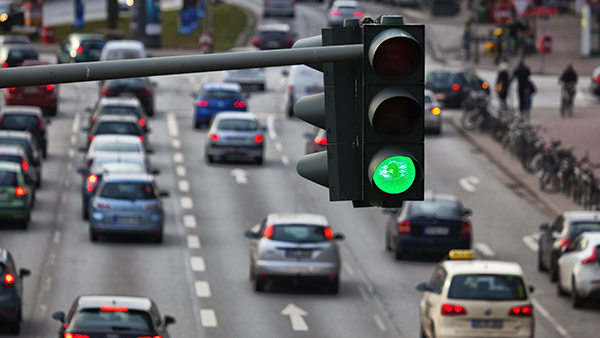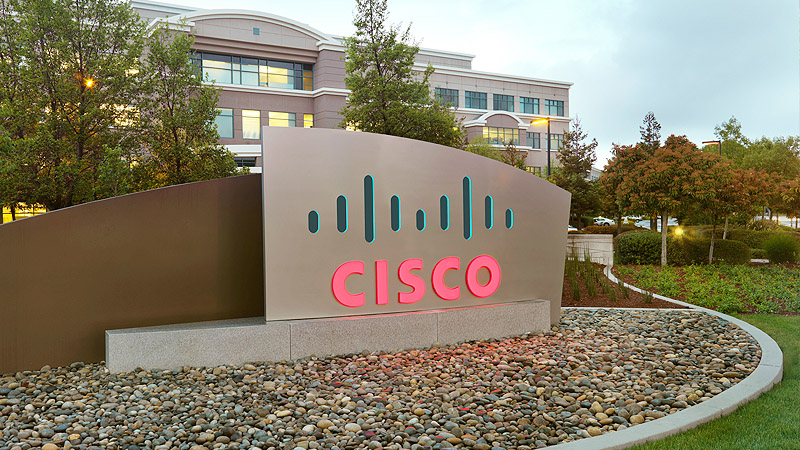
Sound transportation investments have always been directly linked to economic growth and improved productivity. In the US, the Infrastructure Investment and Jobs Act (IIJA) will enable state and local governments to roll out transportation projects to grow the economy, enhance competitiveness, and create good jobs. Investing in transportation infrastructure not only in the US but globally will allow us to repair, replace and enhance our roads, bridges, ports, airports and transit systems. We desperately need investments for asset management, safety, and system operations. Along with traditional repairs, technology can and should be included in these investments. From repairing and replacing to digitising and automating transportation systems, technology innovation is the bridge to get there.

Network connectivity for roadway devices is increasingly important as civil and traffic engineers connect new devices and systems, and instrument existing ones together, as part of an intelligent transport system. As traffic, congestion, and the number of pedestrians and connected cars on the road are all increasing, technology - and network connectivity that supports technology implementation - will enable real-time uses cases to realise traditional and emerging transportation goals. Roadways and intersections that are digitally connected will improve safety, increase operational efficiency, reduce traffic congestion and minimise our carbon footprint. Likewise, interstate highways and other limited access facilities need digital connections to provide information and warning systems to improve highway safety particularly in rural areas. Traffic management centres need to be digitally connected to roadways and intersections to enable the collection of roadside data for analysis, real-time control and visibility from a host of sensors.
The journey to connected roadways and intersections
Though the benefits and possibilities for connected roadways and intersections are evident, there are numerous ways to connect roadside devices. Solutions can range from simple connections of intersections to more advanced integration with city or highway networks. These are just a few of the projects for connected roadways and intersections that help solve the challenges roadway operators are dealing with.
Connected traffic signal controllers enable personnel at traffic operation centres to detect problems in real time, remotely adjust signal phase and timing, and monitor for cybersecurity threats – resulting in less congestion, better safety and fewer truck rolls.
Traffic signal priority (TSP) gives extra green-light time to transit vehicles like buses and light rail to stay on schedule and alleviate congestion. Signal preemption automatically turns the light green when a first-responder vehicle approaches.
 Dynamic message signs warn drivers about hazardous conditions like lane closures, accidents, and bad weather to help prevent accidents and delays.
Dynamic message signs warn drivers about hazardous conditions like lane closures, accidents, and bad weather to help prevent accidents and delays.
Remote weather information systems (RWIS) collects weather data from sensors, like high winds or snowstorms, which can be relayed to those dynamic message signs.
Electric vehicle charging stations - enables remote monitoring, maintenance and updates of electric charging stations
Regardless of complexity, roadway ITS operators and authorities are challenged with existing legacy networks and devices, cybersecurity and physical security risks, the need for multiple access technologies for different use cases, and a lack of real-time access to data and devices. As a result, they are often left with fragmented solutions that limit the ability to scale, secure, and manage critical roadways infrastructure. Roadway operators need a holistic ITS that provides the flexibility to meet current needs while facilitating a clear path forward as technology, complexity and scale evolve.
Modern industrial network devices are essential for building for the future, as older networks and devices crumple under the demands of ITS. Technicians can’t see device status over the network, meaning they must drive to the field for routine maintenance. Traditional switches and routers aren’t designed to withstand harsh outdoor environments, including extreme temperatures, rain and snow. And existing departments of transport networks usually lack the bandwidth for video applications and connected automated vehicles. Our industrial Ethernet switches and 5G routers can connect to legacy equipment, and are built to withstand extreme environmental conditions, and support high-bandwidth applications.
Depending on your use case, ITS like traffic signal controllers, cameras, and traffic counters might need to connect via fiber, LTE, 5G, or Cisco Ultra-Reliable Wireless Backhaul. As use cases and technologies change, it’s beneficial to utilise industrial routers with replaceable communications modules that you can swap out if your needs change – without needing to replace an entire router.
Prepare, secure and scale your network for the future
As cities and DoTs prepare to roll out new use cases for connected transportation systems, it’s essential to have a robust network to support ITS. Managing and maintaining a large network requires scalability and the more use cases you add, the more security you need. The era of connected and autonomous vehicles brings increasing pressures to roadway IT networks, with more advanced use cases around journey optimisation and the safety of all road users, and firmly elevates the roadway devices, and their connectivity, to critical-infrastructure status.
 ITS and roadway devices are often housed in metal enclosures at the side of the road. While the enclosures provide good environmental protection, the physical security of the enclosures/cabinets is often lacking – which makes securing the devices within them even more important. They need cybersecurity protections against attacks that could bring down the network or alter sensor data or responses. Network visibility tools can prevent unauthorised access by segmenting the network. While roadway engineers focus on operation technology (OT), they must work with the IT team to build a strong cybersecurity posture. In turn, IT must gain an understanding of the unique elements of roadway systems for a collaborative, holistic IT/OT security strategy.
ITS and roadway devices are often housed in metal enclosures at the side of the road. While the enclosures provide good environmental protection, the physical security of the enclosures/cabinets is often lacking – which makes securing the devices within them even more important. They need cybersecurity protections against attacks that could bring down the network or alter sensor data or responses. Network visibility tools can prevent unauthorised access by segmenting the network. While roadway engineers focus on operation technology (OT), they must work with the IT team to build a strong cybersecurity posture. In turn, IT must gain an understanding of the unique elements of roadway systems for a collaborative, holistic IT/OT security strategy.
OT and IT can collaborate to reduce cyber risks, deploying hardware with software features that are already very familiar to IT teams. In the demanding locations and environments where roadway connectivity must be safeguarded, Cisco’s industrial IoT portfolio and validated designs enable collaboration and achieve secure access connectivity. Secure right from the access port and right across the network, get visibility of what is on the network, use network segmentation, use network encryption where required and get ready for a successful ITS deployment.
As this article demonstrates, ITS is a very wide-ranging area in terms of applications and sectors of the industry. More specific and targeted information can be found in the below references.
 Cisco IoT solutions for Intelligent Transportation Systems (video)
Cisco IoT solutions for Intelligent Transportation Systems (video)- Cisco IoT Solutions for Connected Roadways and Intersections
- Six Ways to Secure Connectivity for Intelligent Roadways White Paper
- Cisco Industrial Routers and Gateways
- Cisco Ultra-Reliable Wireless Backhaul
ABOUT THE AUTHOR:
Michelle Maggiore is country digitisation manager of Cisco
Sponsored content produced in association with Cisco





